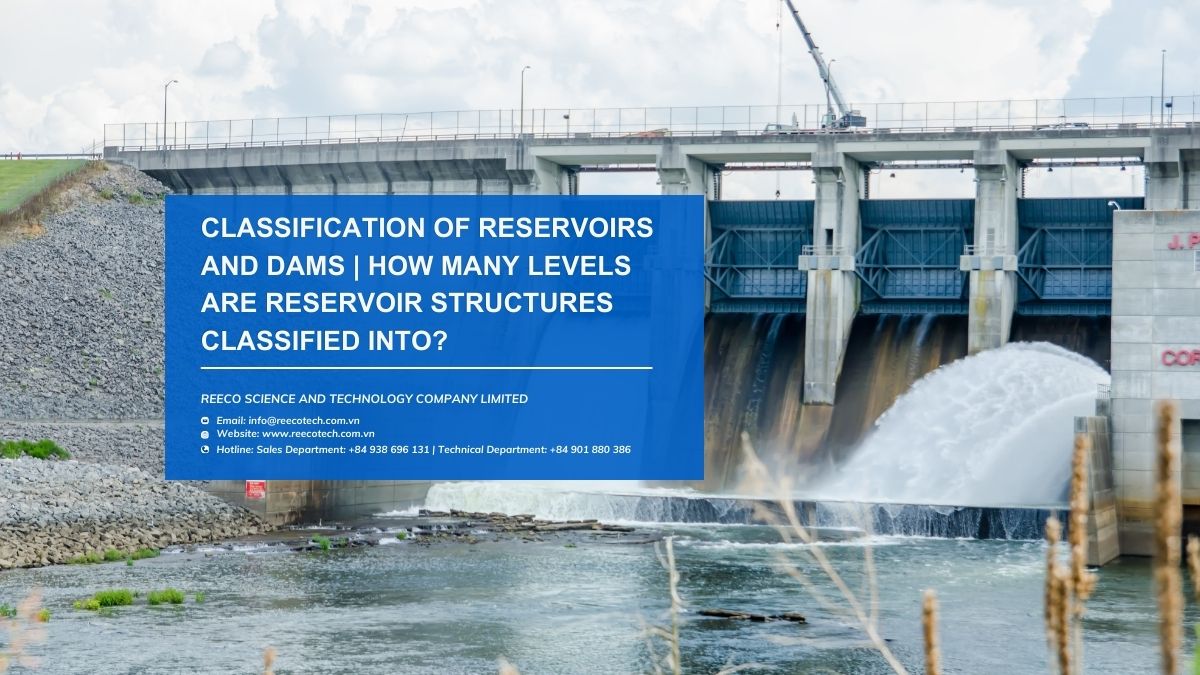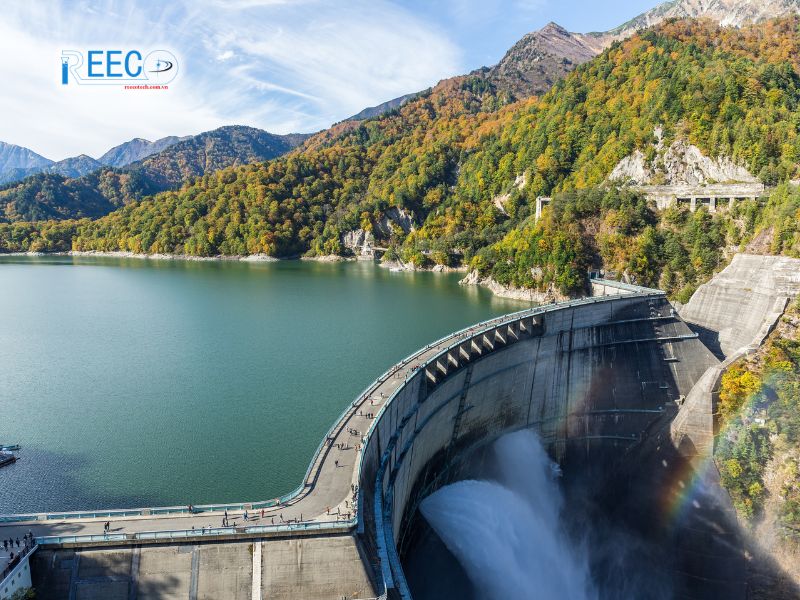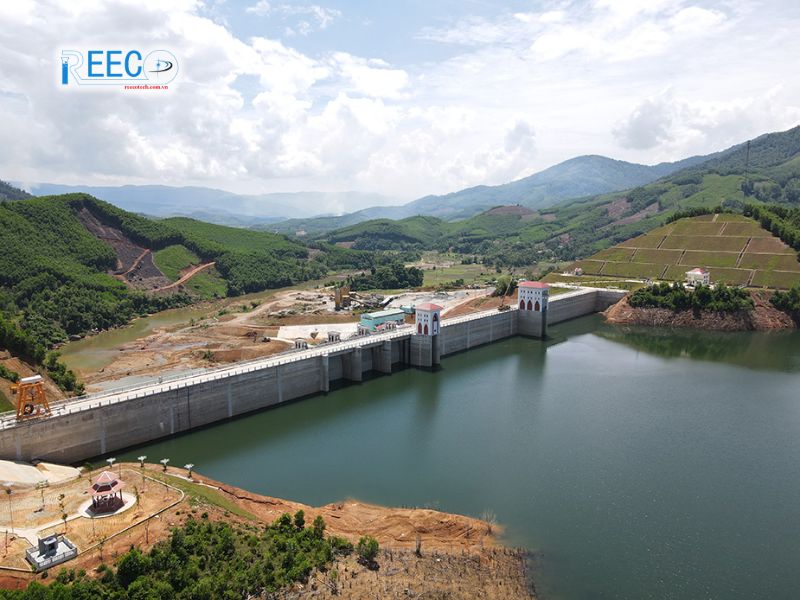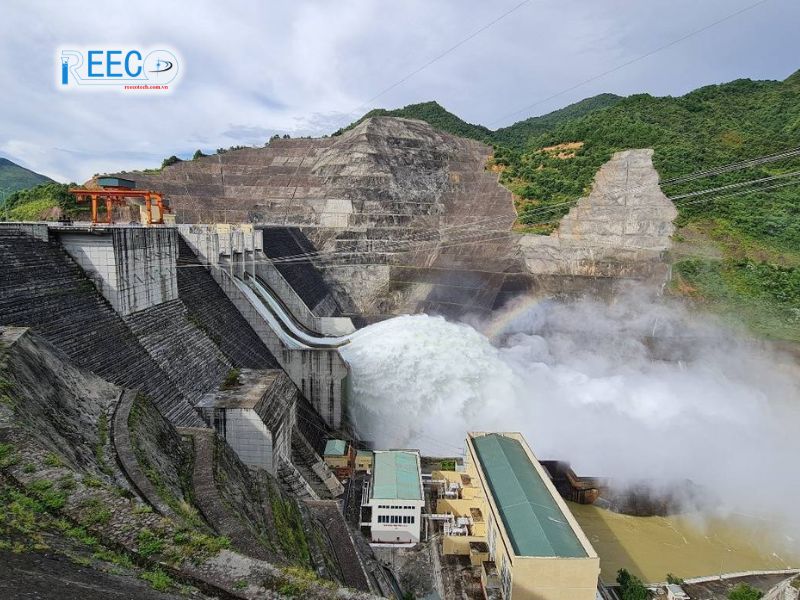Reservoirs and dams are crucial structures in water resource management, providing irrigation, flood control, and renewable energy sources. Classifying reservoirs and dams helps guide the design, construction, and management of these structures effectively.

What are dams and reservoirs?
A dam is a structure built with the purpose of raising water levels or in conjunction with related works to create a reservoir.
A reservoir is formed by a dam raising water levels and related works, with the main tasks of storing and regulating water flow. They play an important role in flood reduction, supplying water for agricultural production, industry, daily life, power generation, and improving the environment. Reservoirs can be divided into two main types: irrigation reservoirs and hydropower reservoirs.
Dam and reservoir safety involves the application of design, construction, management, and operational measures to ensure the safety of these structures as well as the safety of people and property in downstream areas. Ensuring the safety of dams and reservoirs is always a top priority in management and operations.

Classification of Dams and Reservoirs
According to the provisions of Article 3 of Decree No. 114/2018/ND-CP dated September 4, 2018, on the management of dam and reservoir safety, the classification of dams and reservoirs is specified as follows:
First: Particularly important dams and reservoirs fall into one of the following cases:
- Dams with a height of 100 meters or more, or dams of reservoirs specified in points b and c of this clause;
- Reservoirs with a total capacity of 1,000,000,000 m³ or more;
- Reservoirs with a capacity from 500,000,000 m³ to under 1,000,000,000 m³ where the downstream area includes cities, towns, industrial zones, or important structures related to national security.
Second: Large dams and reservoirs fall into one of the following cases:
- Dams with a height from 15 meters to under 100 meters, or dams of reservoirs specified in point c of this clause;
- Dams with a height from 10 meters to under 15 meters and a length of 500 meters or more, or dams with a height from 10 meters to under 15 meters with a designed flood discharge flow of over 2,000 m³/s;
- Reservoirs with a total capacity from 3,000,000 m³ to under 1,000,000,000 m³, except for reservoirs specified in point c, clause 1 of this Article.
Third: Medium-sized dams and reservoirs fall into one of the following cases:
- Dams with a height from 10 meters to under 15 meters, or dams of reservoirs specified in point b of this clause, except for dams specified in point b, clause 2 of this Article;
- Reservoirs with a total capacity from 500,000 m³ to under 3,000,000 m³.
Fourth: Small dams and reservoirs are those with a height under 10 meters or reservoirs with a total capacity under 500,000 m³.
=> Learn more: Specialized Meteorological and Hydrological Monitoring for Dams and Hydropower Reservoirs according to Decree No. 114/ND-CP

Authority to Determine the List of Dams and Reservoirs of Special, Large, Medium, and Small Importance
The authority to determine the list of dams and reservoirs of special, large, medium, and small importance is stipulated as follows:
Minister of Agriculture and Rural Development and Minister of Industry and Trade: They preside over and coordinate with the provincial People’s Committee where the dam or reservoir is located to submit the list of dams and reservoirs of special importance to the Prime Minister for approval.
Minister of Agriculture and Rural Development: Decides the list of large, medium, and small irrigation dams and reservoirs whose exploitation and protection involve more than one province.
Minister of Industry and Trade: Decides the list of large, medium, and small hydroelectric dams and reservoirs constructed in more than one province.
Provincial People’s Committee: Decides the list of dams and reservoirs within the province, excluding those under the authority of the above-mentioned agencies.
=> Reference: What is the penalty for not installing water resource monitoring equipment?

What conditions must special important water reservoirs meet in terms of design and construction?
According to Article 5 of Decree 114/2018/ND-CP, special important water reservoirs must meet the following conditions in terms of design and construction:
Construction Investment: The dam and water reservoir must comply with the requirements stated in Article 17 of the Law on Water Resources.
Structural Design: The overall structure and design of the dam must facilitate safe management, emergency response, maintenance, upgrading, and repairs when necessary.
Operation and Maintenance Procedures: Procedures for operating gates and maintaining each component must be developed, approved, and handed over along with the design documents.
Backup Power Supply: For electrically operated flood discharge gates, there must be at least two power sources, including one from a backup generator.
Monitoring Equipment: Monitoring equipment must be arranged according to current national technical standards and related legal regulations.
Monitoring and Warning System: For dams and water reservoirs with flood regulation gates, an operational monitoring system, information equipment, and safety warning devices for the dam and downstream areas must be installed, along with specialized hydrometeorological monitoring equipment.
Large Reservoirs with Free Spillways: Safety information and warning devices, as well as specialized hydrometeorological monitoring equipment, must be installed.
Medium and Small Reservoirs with Free Spillways: It is recommended to apply the same regulations as for large reservoirs with free spillways.
Database: A database for the dam and water reservoir must be established.
Water Intake and Discharge Structures: These structures must have appropriate height and width for inspection and repair.
Management Road and Operation House: A management road must be constructed for emergency response situations, and an operation house must be built to serve management, exploitation, and disaster prevention duties at the site.
